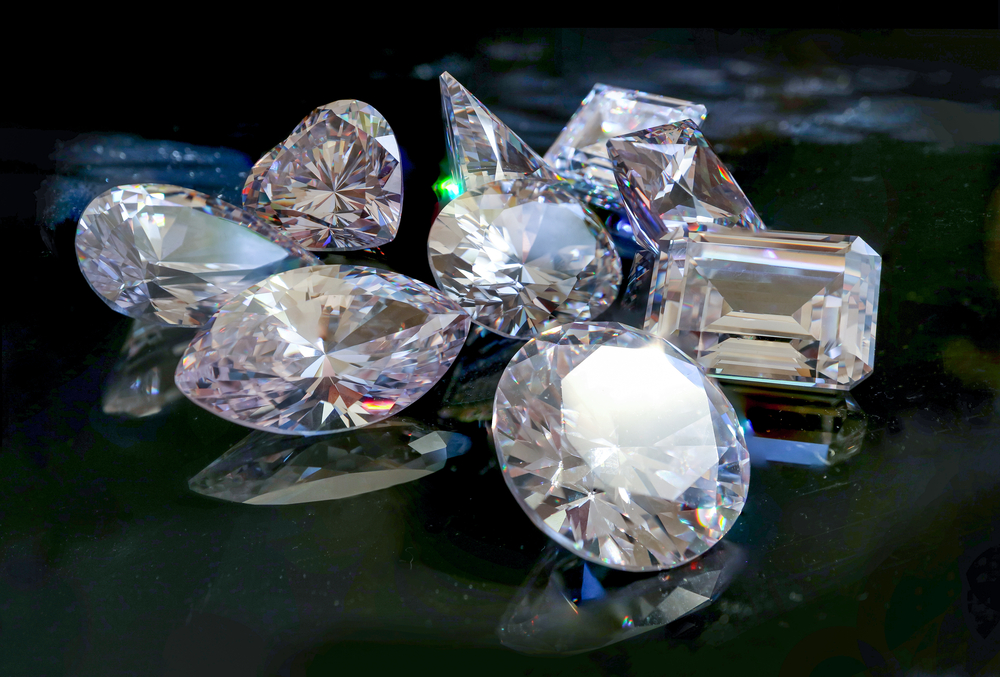
The rise of lab-grown diamonds has created significant conversations in the diamond industry. As awareness of environmental and ethical issues surrounding traditional diamond mining continues to grow, more consumers are looking for alternatives that align with their values. The World Wide Fund for Nature (WWF) is one of the leading organizations advocating for environmental sustainability and ethical practices across various industries. This article will explore how wwF and lab grown diamonds intersect and how this collaboration can benefit the future of both the jewelry market and the planet.
Understanding WWF’s Role in Environmental Advocacy
WWF, or the World Wide Fund for Nature, is a global environmental organization that aims to conserve the world’s biodiversity and reduce the impact of human activities on the environment. WWF focuses on promoting sustainable practices in industries that significantly affect the environment, such as agriculture, forestry, and mining. The organization works with companies, governments, and local communities to create solutions that protect the planet’s natural resources and promote sustainable practices. WWF’s advocacy in the diamond industry has been crucial in highlighting the environmental and social costs of traditional diamond mining.
As WWF has highlighted the environmental damage caused by mining, particularly diamond mining, the organization has also been open to exploring sustainable alternatives. Lab-grown diamonds have emerged as one such alternative, offering the same beauty and durability as natural diamonds but with a significantly lower environmental impact. WWF’s support for the ethical and environmentally friendly production of diamonds makes the collaboration between WWF and lab-grown diamonds essential in promoting sustainability within the jewelry industry.
The Environmental Benefits of Lab Grown Diamonds
Lab-grown diamonds are created in controlled laboratory environments using advanced technology that replicates the natural process of diamond formation. Unlike traditional diamonds, which are mined from the earth, lab-grown diamonds are produced with significantly lower environmental impact. They require fewer resources and contribute less to deforestation, habitat destruction, and pollution, which are common consequences of traditional diamond mining. As the demand for sustainable products grows, lab-grown diamonds have emerged as a viable alternative, aligning with WWF’s goals of minimizing environmental harm.
The process of creating lab-grown diamonds also generates far fewer carbon emissions compared to traditional mining. Since the production of lab-grown diamonds occurs in a controlled setting, it allows for the use of renewable energy sources, which further reduces their carbon footprint. WWF’s commitment to addressing climate change aligns well with the production of lab-grown diamonds, which offer an eco-friendly solution to one of the most environmentally destructive industries in the world. The reduced ecological impact of lab-grown diamonds has made them a favored choice for environmentally conscious consumers.
WWF’s Advocacy for Ethical Diamond Practices
WWF has long advocated for ethical practices in the diamond industry, urging companies to adopt responsible sourcing and fair labor practices. Traditional diamond mining has been associated with human rights abuses, exploitation, and conflict financing, which has led to the rise of initiatives like the Kimberley Process. While the Kimberley Process aims to stop the trade in conflict diamonds, concerns remain about its effectiveness in addressing all human rights violations tied to diamond mining.
Lab-grown diamonds offer a solution to many of the ethical concerns associated with mined diamonds. Since lab-grown diamonds do not rely on mining, they eliminate the risks of labor exploitation and human rights abuses commonly found in mining operations. WWF’s partnership with companies producing lab-grown diamonds supports its broader mission of promoting ethical supply chains and responsible sourcing. By encouraging consumers to opt for lab-grown diamonds, WWF is helping to foster a jewelry market where ethical considerations are at the forefront.
How WWF and Lab Grown Diamonds Align on Sustainability
Sustainability is at the heart of both WWF’s mission and the production of lab-grown diamonds. WWF works to protect the environment and support biodiversity while addressing climate change, resource depletion, and pollution. Lab-grown diamonds provide a sustainable alternative to mined lab diamonds, which often cause significant damage to ecosystems through land degradation and water contamination.
The collaboration between WWF and lab-grown diamonds offers consumers an opportunity to contribute to environmental conservation without compromising on quality or beauty. As lab-grown diamonds are produced with a fraction of the environmental cost of traditional diamonds, they help promote a more sustainable future for the jewelry industry. WWF’s advocacy and efforts to highlight the importance of sustainable consumption further emphasize the need for sustainable alternatives, making lab-grown diamonds a crucial part of this movement.
The Growing Popularity of Lab Grown Diamonds
As consumers become more aware of the environmental and ethical issues surrounding traditional diamond mining, there has been a noticeable shift toward more sustainable options. Lab-grown diamonds are increasingly being recognized for their ethical and environmental advantages, and many consumers are choosing them over mined diamonds as a result. WWF has been instrumental in raising awareness about the environmental cost of diamond mining, and lab-grown diamonds are seen as a positive step forward in reducing these impacts.
The popularity of lab-grown diamonds continues to grow as more people seek to align their purchases with their values. By choosing lab-grown diamonds, consumers can feel confident that their jewelry is not contributing to the destruction of ecosystems or the exploitation of workers. WWF’s endorsement of sustainable and ethical alternatives further supports the widespread adoption of lab-grown diamonds, encouraging consumers to make responsible choices while still enjoying the luxury and beauty of diamonds.
How WWF’s Support Benefits the Lab Grown Diamond Market
WWF’s endorsement and advocacy for sustainability and ethical practices play a significant role in promoting the lab-grown diamond industry. As a globally recognized environmental organization, WWF’s involvement lends credibility to the lab-grown diamond market and reinforces the message that these diamonds are a better option for the environment and society. WWF’s partnership with companies in the lab-grown diamond industry encourages further investment in sustainable production methods, making it easier for consumers to access ethically produced, high-quality diamonds.
By supporting lab-grown diamonds, WWF is helping to create a more transparent and ethical jewelry industry. The growing demand for eco-friendly and ethical products is driving innovation in the production of lab-grown diamonds, leading to improvements in their quality and affordability. This not only benefits the environment but also makes sustainable jewelry options more accessible to a broader audience. WWF’s work with lab-grown diamonds ultimately contributes to creating a more sustainable and responsible future for the global jewelry market.
The Future of WWF and Lab Grown Diamonds
Looking ahead, the collaboration between WWF and lab-grown diamonds will continue to shape the future of the jewelry industry. As the demand for sustainable and ethical products increases, lab-grown diamonds are poised to become an even more prominent part of the market. WWF’s continued advocacy for responsible sourcing and environmental conservation will encourage more consumers to consider the impact of their purchasing decisions and choose lab-grown diamonds as an alternative to traditional mined stones.
With WWF’s support, lab-grown diamonds have the potential to revolutionize the jewelry industry by creating a more sustainable and ethical market for diamonds. By providing a viable alternative to diamond mining, lab-grown diamonds can help reduce the negative environmental and social impacts associated with the diamond trade. As awareness grows and more consumers make the switch to lab-grown diamonds, the positive effects on the environment and society will continue to expand.
Conclusion: WWF and Lab Grown Diamonds – A Partnership for Change
The collaboration between WWF and lab-grown diamonds is a powerful example of how sustainability and ethics can come together to shape a better future for the jewelry industry. By supporting lab-grown diamonds, WWF is helping to reduce the environmental and social costs of diamond production, promoting responsible consumption, and encouraging consumers to make more ethical choices. As the lab-grown diamond market continues to grow, WWF’s involvement will be crucial in ensuring that the industry remains committed to sustainability and ethical practices. For those looking to invest in beautiful and responsible jewelry, lab-grown diamonds offer a compelling and environmentally friendly alternative.





